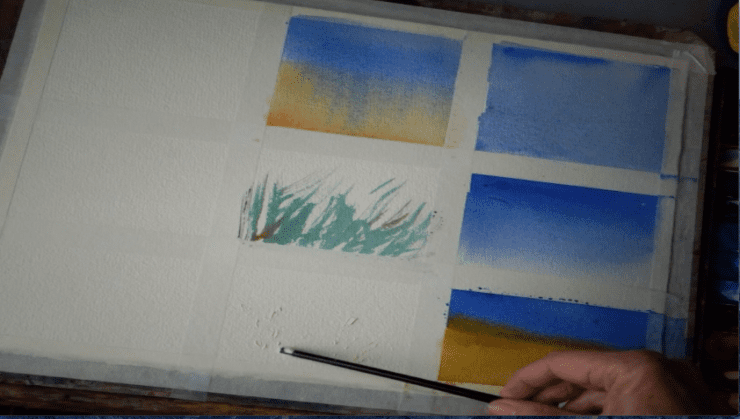What can you do with masking fluid?
Masking fluid is a rubber cement that you can use to mask out areas of your paper in order to preserve the underlying color. When you have finished working around the masking fluid, you can easily remove it.
There are many reasons why you would use masking fluid, and you can apply it at any stage of the painting. The only warning is not to apply it to wet paper as this will prevent the masking fluid from adhering to the paper, and will not produce a suitable mask.
If you want to apply a broad wash across your painting, but do not want the color wash to cover key details within a composition, you can use masking fluid to preserve the underlying color.
You can also apply masking fluid directly on the bare paper to preserve the white, and it creates skin over the areas you want to protect from the color you apply over the top. Once you have finished applying the color you can simply remove the masking fluid to further build up your composition.
Tips
You can use old masking fluid that has thickened to build up larger areas such as boat masts, trees, and fences.
You can rub your fingers over the masking fluid in order to remove it, but sometimes this can wear away the paper as well. It is better to use a masking fluid eraser, but a cheaper option is to use an old roll of masking tape.
Use old or inexpensive brushes when applying masking fluid, and always wash them with warm soapy water after use.
Do not leave the masking tape on for too long, as this will make it more difficult to remove.
